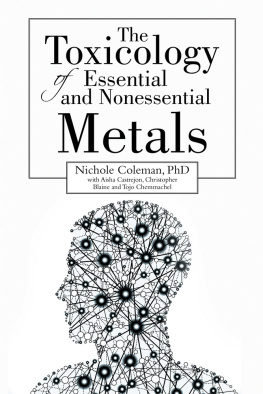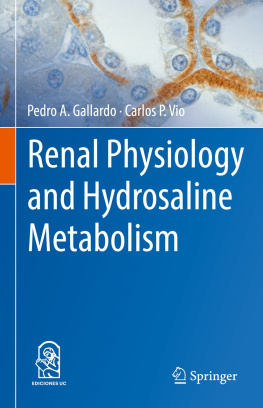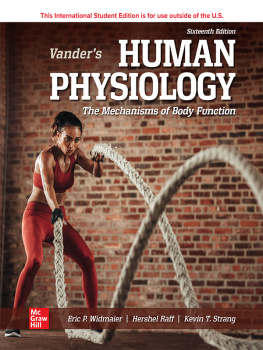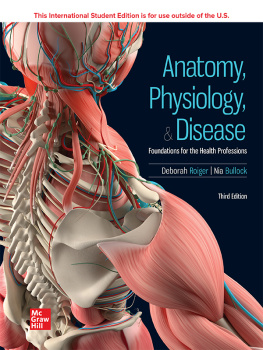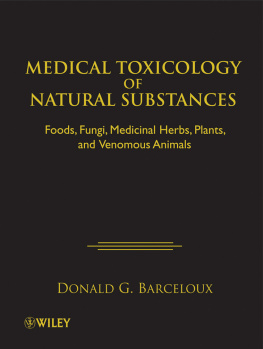Wood Chris M. - Fish Physiology: Homeostasis and Toxicology of Essential Metals
Here you can read online Wood Chris M. - Fish Physiology: Homeostasis and Toxicology of Essential Metals full text of the book (entire story) in english for free. Download pdf and epub, get meaning, cover and reviews about this ebook. year: 2010, publisher: Elsevier Science, genre: Children. Description of the work, (preface) as well as reviews are available. Best literature library LitArk.com created for fans of good reading and offers a wide selection of genres:
Romance novel
Science fiction
Adventure
Detective
Science
History
Home and family
Prose
Art
Politics
Computer
Non-fiction
Religion
Business
Children
Humor
Choose a favorite category and find really read worthwhile books. Enjoy immersion in the world of imagination, feel the emotions of the characters or learn something new for yourself, make an fascinating discovery.

- Book:Fish Physiology: Homeostasis and Toxicology of Essential Metals
- Author:
- Publisher:Elsevier Science
- Genre:
- Year:2010
- Rating:3 / 5
- Favourites:Add to favourites
- Your mark:
- 60
- 1
- 2
- 3
- 4
- 5
Fish Physiology: Homeostasis and Toxicology of Essential Metals: summary, description and annotation
We offer to read an annotation, description, summary or preface (depends on what the author of the book "Fish Physiology: Homeostasis and Toxicology of Essential Metals" wrote himself). If you haven't found the necessary information about the book — write in the comments, we will try to find it.
Wood Chris M.: author's other books
Who wrote Fish Physiology: Homeostasis and Toxicology of Essential Metals? Find out the surname, the name of the author of the book and a list of all author's works by series.
Fish Physiology: Homeostasis and Toxicology of Essential Metals — read online for free the complete book (whole text) full work
Below is the text of the book, divided by pages. System saving the place of the last page read, allows you to conveniently read the book "Fish Physiology: Homeostasis and Toxicology of Essential Metals" online for free, without having to search again every time where you left off. Put a bookmark, and you can go to the page where you finished reading at any time.
Font size:
Interval:
Bookmark:
This is Volume 31A in the
FISH PHYSIOLOGY series
Edited by Chris M. Wood, Anthony P. Farrell and Colin J. Brauner
Honorary Editors: William S. Hoar and David J. Randall
A complete list of books in this series appears at the end of the volume
Fish Physiology
Homeostasis and Toxicology of Essential Metals
Chris M. Wood
Department of Biology, McMaster University, Hamilton, Ontario, Canada
Anthony P. Farrell
Department of Zoology and Faculty of Land and Food Systems, The University of British Columbia, Vancouver, British Columbia, Canada
Colin J. Brauner
Department of Zoology, The University of British Columbia, Vancouver, British Columbia, Canada

Copyright
Contents
Contents of homeostasis and toxicology of non-essential metals, volume 31B
Contributors
Preface
Chris M. Wood, Anthony P. Farrell, Colin J. Brauner
We are pleased to present this two-volume book on the homeostasis and toxicology of metals to the Fish Physiology series, the brainchild of Bill Hoar and Dave Randall, which has become the bible of our field since its inception more than 40 years ago. Physiology and toxicology are particularly closely linked in the aquatic sciences, and all three editors are practitioners of both fields. Indeed, we prefer to work at the interface of the two fields where physiological understanding of mechanisms explains toxic response, and toxicological phenomena illuminate physiological theory. We believe the book captures this interface. We trust it will appeal to the regular readers of the Fish Physiology series, as well as to a much broader audience including nutritional physiologists, toxicologists, and environmental regulators.
The motivation for this two-volume book has two origins:
Firstly, there has been an explosion of new information on the molecular, cellular, and organismal handling of metals in fish in the past 15 years. While most of the research to date has focused on waterborne metals, there is a growing realization of the importance of diet-borne metals. These elements are no longer viewed by fish physiologists as evil heavy metals (an outdated and chemically meaningless term) that kill fish by suffocation. Rather, they are now viewed as interesting moieties that enter and leave fish by specific pathways, and which are subject to physiological regulation. These regulatory pathways may be ones dedicated for essential metal uptake (e.g., copper-specific, iron-specific, zinc-specific transporters) or ones at which metals masquerade as nutrient ions (ionic mimicry e.g., copper and silver mimic sodium; cobalt, zinc, lead, strontium, and cadmium mimic calcium; nickel mimics magnesium). Internally, homeostatic mechanisms include regulated storage and detoxification (e.g., metallothioneins, glutathione, granule formation) and protein vehicles for transporting metals around the body in the circulation (e.g., ceruloplasmin, transferrin). Molecular and genomic techniques have allowed precise characterization of these pathways, and how they respond to environmental challenges such as metal loading and deficiency. Bioaccumulation of metals is now widely studied in both the laboratory and the field, but interpretation of the data remains controversial. New techniques such as subcellular fractionation and modeling of metal-sensitive and metal-insensitive pools are providing clarification and new pathways for further research.
Secondly, this same period has seen a progressively increasing concern about the potential toxicity of metals in the aquatic environment. At present, the European Union, the United States, Canada, Australia/New Zealand, China, several Latin American countries, and diverse other jurisdictions around the world are all in the process of revising their ambient water quality criteria for metals. Coupled to this has been a sharp growth in toxicological research on metal effects on fish. Much of this research has focused on the physiological mechanisms of uptake, storage, and toxicity, and from this various modeling approaches have evolved which have proven very useful in the regulatory arena. For example, tissue residue models, to relate internal metal burdens to toxic effects, and biotic ligand models (BLMs), to relate gill metal burdens in different water qualities to toxic effects, are two physiological models that are now being considered by regulatory authorities in setting environmental criteria for metals (e.g., residue models for selenium and mercury regulations; BLMs for copper, zinc, silver, cadmium, and nickel criteria).
This work was conceived as a single book to cover all the metals for which a sizeable database exists. Its division into two published volumes (Vol. 31A dealing with essential metals, Vol. 31B dealing with non-essential metals) was solely for practical reasons of size, stemming from each metal being dealt with in a uniform and comprehensive manner. Regardless, the two volumes are fully integrated by cross-referencing between the various chapters, and they share a common index.
Three chapters in particular tie the package together with real-world scenarios and applications: Chapter 1 of Vol. 31A on Basic Principles serves as an Introduction to the whole book, while Chapter 9 of Vol. 31A on Field Studies on Metal Accumulation and Effects in Fish and Chapter 9 of Vol. 31B on Modeling the Physiology and Toxicology of Metals serve as integrative summaries dealing with both essential and non-essential metals.
The other 15 chapters each deal with specific metals, and authors were strongly urged to adopt a unified format which is explained in Chapter 1 of Vol. 31A. This format includes consideration of the following topics:
As a result, the book should serve as a one-stop source for a synthesis of current knowledge on both the physiology and toxicology of a specific metal, and selective readers should be able to quickly find the specific information they require. Furthermore, the chapters should help guide future research by pointing out significant data gaps for particular metals.
This book would not have been possible without a vast contribution of time and effort from many people. First and foremost, our gratitude to the authors of the chapters, who represent some of the leading experts in the world in metals physiology and toxicology. Not only did these researchers sacrifice nights, weekends, and holidays to craft their chapters, they also constructively reviewed many of the other chapters. In addition, more than 20 anonymous external peer-reviewers contributed greatly to the quality of the chapters. Pat Gonzalez, Kristi Gomez, Caroline Jones, and Charlotte Pover at Elsevier provided invaluable guidance and kept the project on track. Finally, special thanks are due to Sunita Nadella at McMaster University, who proofread and corrected every chapter before submission to Elsevier.
Next pageFont size:
Interval:
Bookmark:
Similar books «Fish Physiology: Homeostasis and Toxicology of Essential Metals»
Look at similar books to Fish Physiology: Homeostasis and Toxicology of Essential Metals. We have selected literature similar in name and meaning in the hope of providing readers with more options to find new, interesting, not yet read works.
Discussion, reviews of the book Fish Physiology: Homeostasis and Toxicology of Essential Metals and just readers' own opinions. Leave your comments, write what you think about the work, its meaning or the main characters. Specify what exactly you liked and what you didn't like, and why you think so.

